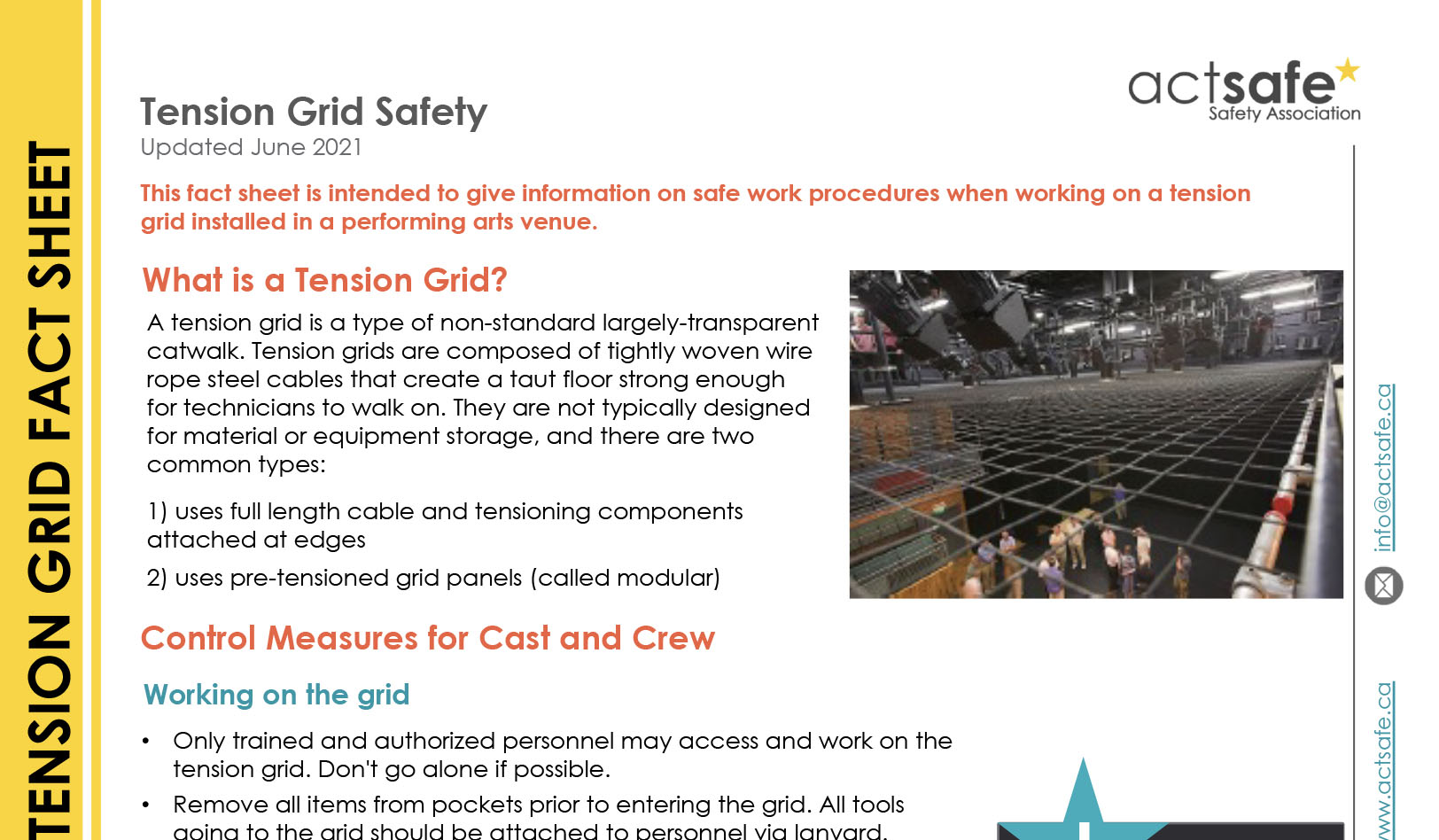To read the full document, and to print, click here (143 KB).
This fact sheet is intended to give information on safe work procedures when working on a tension grid installed in a performing arts venue.
WHAT IS A TENSION GRID?
A tension grid is a type of non-standard largely-transparent catwalk. Tension grids are composed of tightly woven wire rope steel cables that create a taut floor strong enough for technicians to walk on. They are not typically designed for material or equipment storage, and there are two common types:
- uses full length cable and tensioning components attached at edges
- uses pre-tensioned grid panels (called modular)
CONTROL MEASURES FOR CAST AND CREW
Working on the grid
- Only trained and authorized personnel may access and work on the tension grid. Don’t go alone if possible.
- Remove all items from pockets prior to entering the grid. All tools going to the grid should be attached to personnel via lanyard.
- Always work with a spotter below when there is a risk of objects falling from the tension grid i.e., during setup and strike. The spotter should wear a CSA approved hard hat and be positioned in a safe location to keep people out of the area below and warn those working on the grid of hazards.
- Wear a hard hat equipped with a chin strap in low ceiling grid areas or as a spotter working below.
- If work is performed outside the tension grid at heights of 10′ or more, including times of access and departure, other means of fall protection (such as a plan, guardrails, fall-restraint, fall-arrest, safe procedures, etc.) should be developed, implemented, and monitored.
- When extending lighting circuits, lowering rigging points or other hanging materials from the grid, lower them with a ground spotter and clear directions.
- When lowering any other materials and equipment from the grid use stairs when possible, or a rope and bucket system.
- Never cut holes in the tension grid, bounce on it or otherwise physically alter the grid.
Working below the grid
When there is a risk of objects falling from the grid, i.e., during setup and
strike, personnel working beneath the grid should:
- Be limited in number and wear hard hats.
- Install warning signs and barriers to prevent unauthorized personnel from entering the areas affected by the work.
- Consider warning lights and lockable access when overhead work is being conducted.
Information in this fact sheet was obtained from the University of California Performing Arts Safety Manual



Share Now: